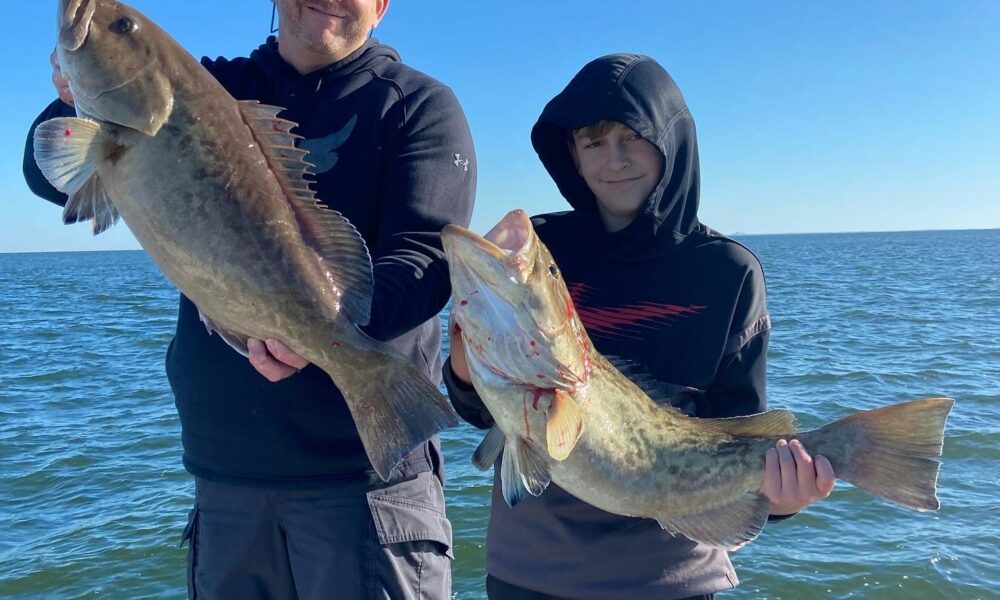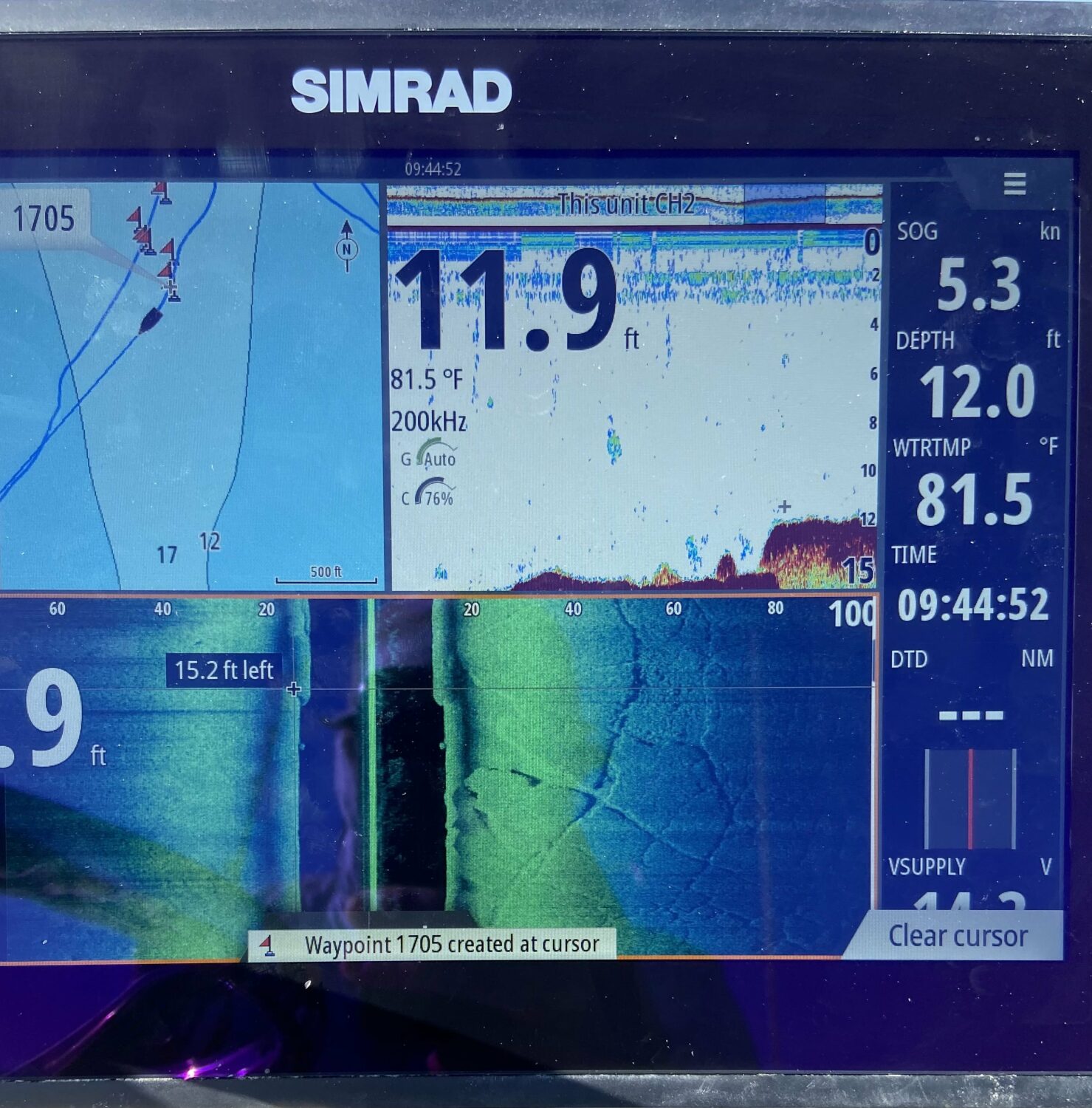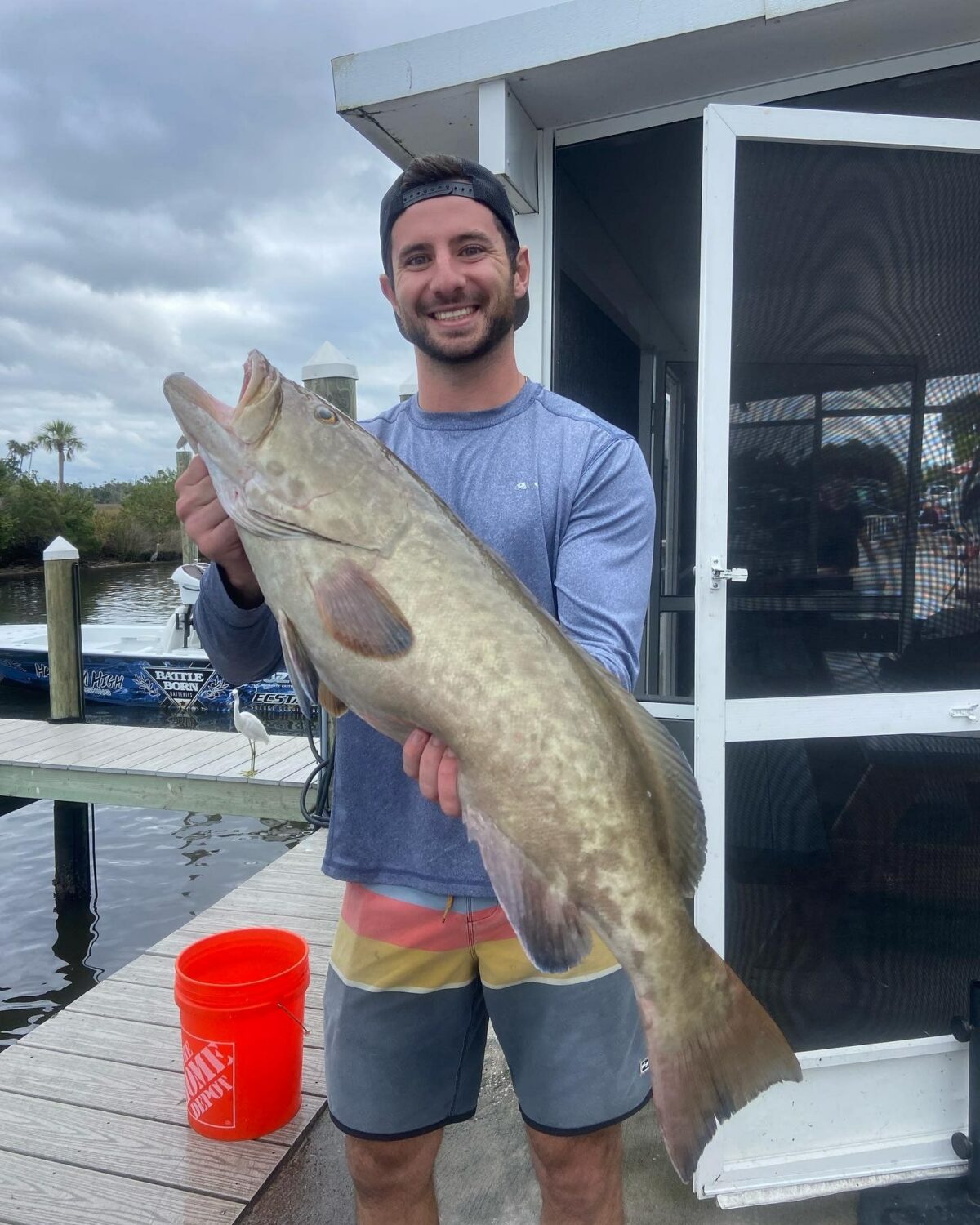
Crystal River, FL is known for its World Class Shallow Water Gag Grouper Fishing. This article will break down everything you need to know to give you the chance at catching a Grouper of a lifetime.
Where Are Gag Grouper Found?
Gag Grouper are really a simple fish in terms of where they like to reside. An area with hard bottom, a rocky structure, or a ledge are great spots to find them. Keep in mind that water temperature and time of the year play a big factor in locating Grouper as well. Warmer water temps in the summer months tend to concentrate the grouper in the 40 ft plus depth range. While in the fall, these fish tend to migrate inshore and school up on our shallow rock piles in the 8–15-foot depth range. This is generally happens when we start to get cold fronts that drop the water temperature.
How Do You Find Gag Grouper?
Look For:
Rock Piles and Ledges
Artificial Reefs and Springs
Water Temperature
Indepth Look at Finding Shallow Water Grouper
You might be asking yourself, “How do you find where Grouper are in such a big body of water like the Gulf of Mexico?”. Well, for starters, good electronics will make a world of difference to aid you in your search. These Gag Groupers are holding to structure, so make sure the unit you choose has the ability to run Side Scan, as it will greatly increase your chances of finding structure faster. My unit of choice is from the Simard NSS Evo 3 line, and although it may be on the pricier side, it is arguably the best unit out there. Pair the unit up with an active imagining 3-1 transducer from Simard, and you’re ready to get out there.
Side Scan, when first introduced to it, can be a little difficult to understand, but the concept is actually simple. The screen is broken up into two sections denoting which side of the boat it’s reading. Unlike traditional sonar or Down Scan, which reads directly below the boat, Side Scan reads off each side of the boat allowing you to scan a greater area when looking for new spots.

Once you have the technology needed to see the structure below, how do you find the fish? Truthfully, there is no substitution for time out on the water spent looking around. A common practice that is referred to as “running grid” is the most effective method in finding structure while making sure areas are thoroughly covered. This practice entails driving an outline of a certain area and slowly closing it in until you’ve covered everything in it. If you don’t already have any spots to work with, look at the contour lines on your unit and find ones that gradually get closer as this tends to denote a rise or fall in depth off the bottom. Running grid around this type of area will give you a higher probability of locating good bottom.
How to Catch Gouper
Tackle
Now that you’ve located the Grouper, it’s time to break down what is needed to catch them. We’ve already seen in the process of finding our Grouper spots that they live in some very rugged and rocky places. That being said, they tend to get broken off in the bottom, so having adequate tackle is a must. I go by what I call the 80 Rule. In order to stand the best chance of landing these fish, you want to be using 80-pound braid, 80 floro leader and an 8k sized reel. A stout rod with a stiff backbone is also recommended, usually something in the 60+ pound class range. Be sure to lock the drag down on these reels as it’s a popped or stop em type of fishing. These Grouper are going to give it everything they have to get back to their home and break you off.
Grouper Catching Techniques
- Live Bait
- Dead Bait
- Trolling Plugs
- Casting Plugs
Live Bait
There are a lot of ways to target Gag Grouper, but a frisky live bait is rarely ever turned down when put in front of them. A live pinfish is the bait of choice in our area due to the abundance, but since groupers are aggressive, they’ll eat just about any bait fish out there. The most common rig would be the fish finder rig or knocker rig with a 6/0 – 8/0 circle hook.
Dead Bait
When the water temperature gets really cold in the wintertime, these fish can become lethargic and don’t want to chase live bait. This is when we switch over to the ole trusty frozen threadfin herring. Any bait that has a little stank to it will work. Since the cut bait is on the bottom, other fish such as grunts, mangrove snapper, etc. will come over for a nibble which attracts the Grouper. There is an old saying that goes “Action brings action”.
Trolling Lures
Trolling plugs is a very easy method and one of the most popular when it comes to grouper fishing. Match the plug size to the depth of the water you’ll be trolling in. Grouper will usually key into a few things while you’re trolling. The speed of the plug, the color, and which direction the plug is coming from with or against the current. Troll two plugs at a time, one in a more natural color and one in a brighter color. I’ll adjust accordingly as I see which plug is performing better. Troll the lures around 4-5mph and make a few passes over the rock in varying directions. This helps to determine how they want the plug presented. Once you hook a grouper, continue idling away from the structure. This will ensure he won’t get you back into the rock and break you off.
Casting Lures
Casting plugs in the 6-12ft depth range, set up down current of the rock and cast up toward it with a fast retrieve. Don’t be afraid to work these plugs aggressively. If the straight retrieve isn’t getting any bites, try adding in some pauses and jerks. Casting these lures can get tiring but the reward of catching Shallow Water Grouper throwing lures is like no other.

2023 Gag Grouper Regulations
Major Gag Grouper regulation changes have been put in place for the Gulf Side of Florida in 2023. Our season has been reduced from the 2022 Season of June 1st – Dec 31st down to September 1st – November 10th for 2023. For new regulation info please click here.
Places To Stay While in Crystal River, Fl
Waterfront Home Crystal River with Private Dock and kayaks – Citrus County (vrbo.com)
Waterfront Kings Bay, Swim in Springs off the boat dock – Kayaks incl. – Citrus County (vrbo.com)